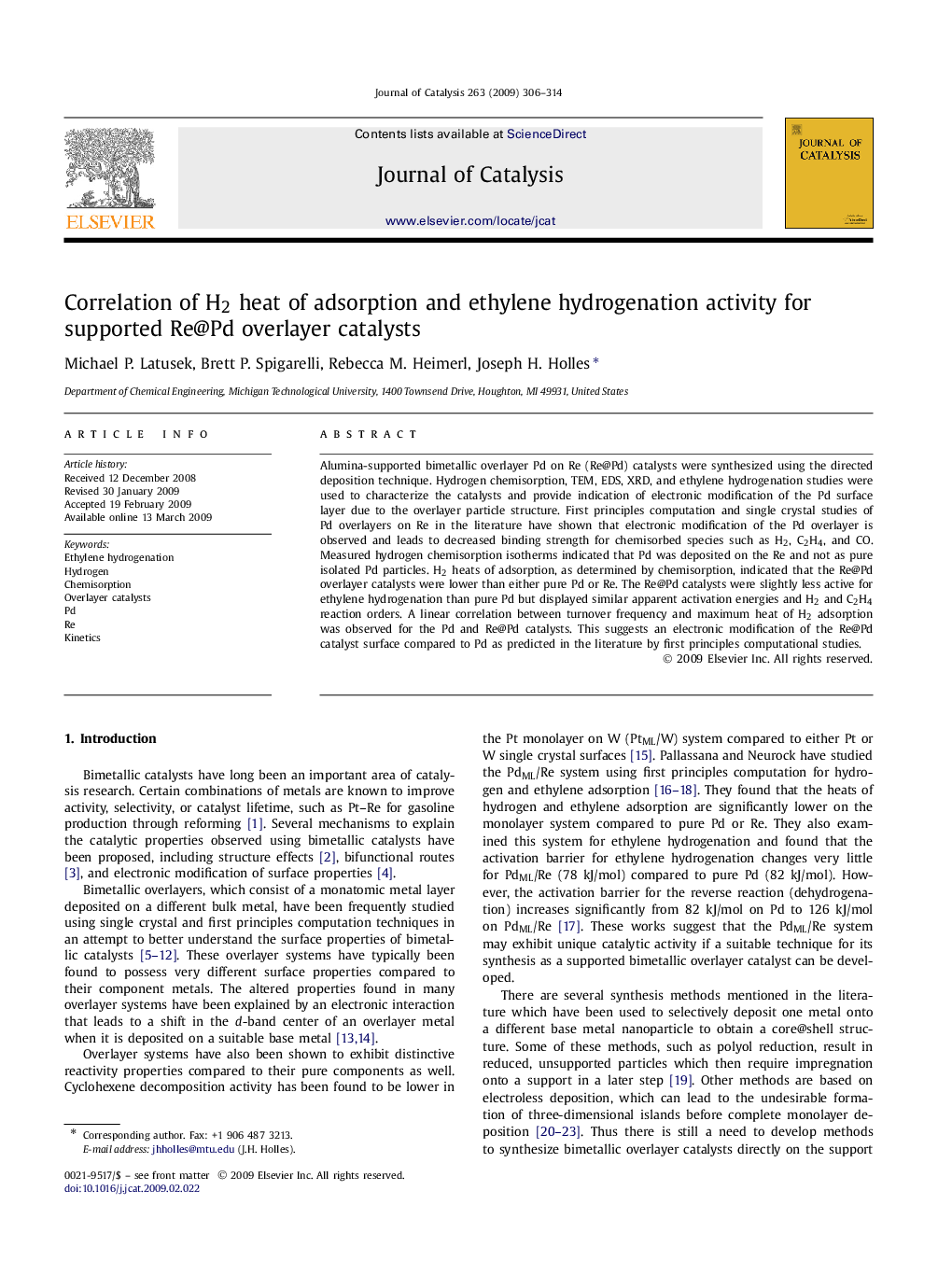| Article ID | Journal | Published Year | Pages | File Type |
|---|---|---|---|---|
| 62225 | Journal of Catalysis | 2009 | 9 Pages |
Alumina-supported bimetallic overlayer Pd on Re (Re@Pd) catalysts were synthesized using the directed deposition technique. Hydrogen chemisorption, TEM, EDS, XRD, and ethylene hydrogenation studies were used to characterize the catalysts and provide indication of electronic modification of the Pd surface layer due to the overlayer particle structure. First principles computation and single crystal studies of Pd overlayers on Re in the literature have shown that electronic modification of the Pd overlayer is observed and leads to decreased binding strength for chemisorbed species such as H2, C2H4, and CO. Measured hydrogen chemisorption isotherms indicated that Pd was deposited on the Re and not as pure isolated Pd particles. H2 heats of adsorption, as determined by chemisorption, indicated that the Re@Pd overlayer catalysts were lower than either pure Pd or Re. The Re@Pd catalysts were slightly less active for ethylene hydrogenation than pure Pd but displayed similar apparent activation energies and H2 and C2H4 reaction orders. A linear correlation between turnover frequency and maximum heat of H2 adsorption was observed for the Pd and Re@Pd catalysts. This suggests an electronic modification of the Re@Pd catalyst surface compared to Pd as predicted in the literature by first principles computational studies.
Graphical abstractBimetallic overlayer Pd on Re (Re@Pd) catalysts showed decreased H2 heat of adsorption and ethylene hydrogenation activity compared to Pd. A correlation relating hydrogen adsorption strength and activity was developed.Figure optionsDownload full-size imageDownload high-quality image (24 K)Download as PowerPoint slide
